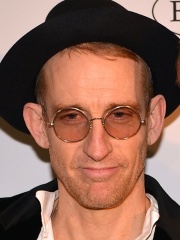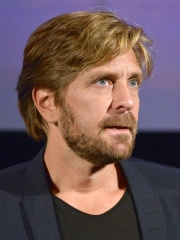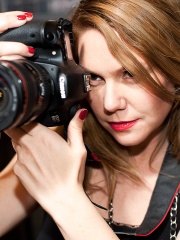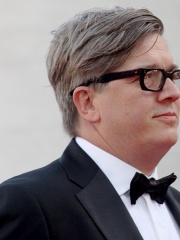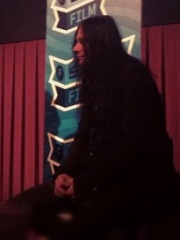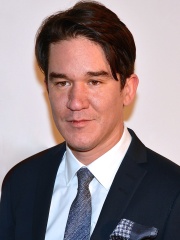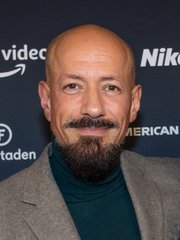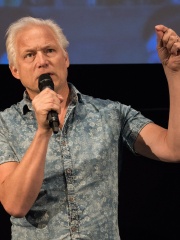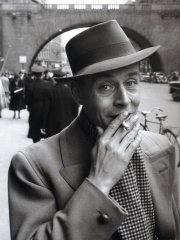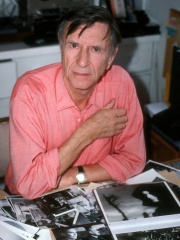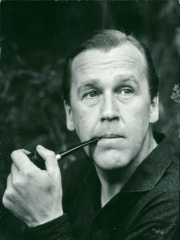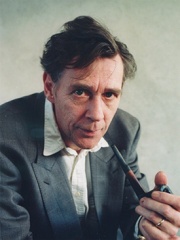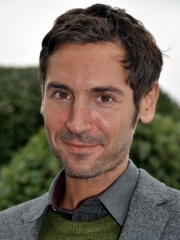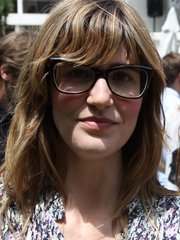
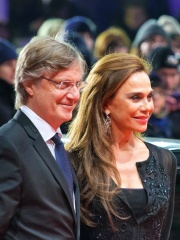
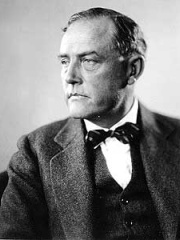
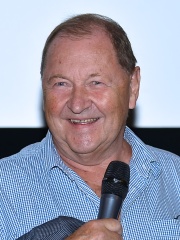
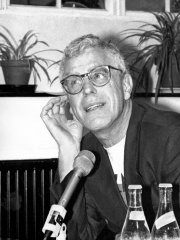
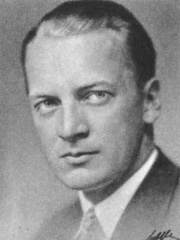
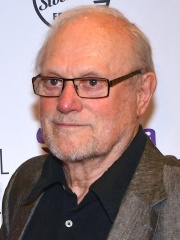
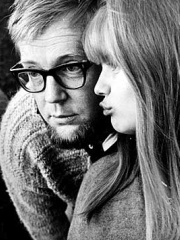
The Most Famous
FILM DIRECTORS from Sweden
This page contains a list of the greatest Swedish Film Directors. The pantheon dataset contains 2,041 Film Directors, 27 of which were born in Sweden. This makes Sweden the birth place of the 17th most number of Film Directors behind China, and Australia.
Top 10
The following people are considered by Pantheon to be the top 10 most legendary Swedish Film Directors of all time. This list of famous Swedish Film Directors is sorted by HPI (Historical Popularity Index), a metric that aggregates information on a biography's online popularity. Visit the rankings page to view the entire list of Swedish Film Directors.

1. Ingmar Bergman (1918 - 2007)
With an HPI of 82.46, Ingmar Bergman is the most famous Swedish Film Director. His biography has been translated into 134 different languages on wikipedia.
Ernst Ingmar Bergman (14 July 1918 – 30 July 2007) was a Swedish film and theatre director and screenwriter. He is considered one of the greatest and most important filmmakers in the history of cinema, most notably as a prominent figure of both European film industry and Swedish cinema. His films have been described as "profoundly personal meditations into the myriad struggles facing the psyche and the soul." Among his most acclaimed works are The Seventh Seal (1957), Wild Strawberries (1957), Persona (1966) and Fanny and Alexander (1982), which were included in the 2012 edition of Sight & Sound's Greatest Films of All Time. He was also ranked No. 8 on the magazine's 2002 "Greatest Directors of All Time" list. Other notable works include Sawdust and Tinsel (1953), A Lesson in Love (1954), Smiles of a Summer Night (1955), The Virgin Spring (1960), Through a Glass Darkly (1961), Winter Light and The Silence (both 1963), Shame (1968) which was called the director's ultimate personal vision of war, Cries and Whispers (1972), Scenes from a Marriage (1973) and Autumn Sonata (1978). His films led to international acclaim and garnered Academy Award wins and nominations throughout his career, including his personal Irving G. Thalberg Memorial Award and three competitive wins accepted for Best Foreign Language Film to Swedish entries. Bergman directed more than 60 films and documentaries, most of which he also wrote, for both cinema releases and television screenings. Most of his films were set in Sweden, and many of his films from 1961 onward were filmed on the island of Fårö. He forged a creative partnership with his cinematographers Gunnar Fischer and Sven Nykvist. Bergman also had a theatrical career that included periods as Leading Director of Sweden's Royal Dramatic Theatre in Stockholm and of Germany's Residenztheater in Munich. He directed more than 170 plays. Among his company of actors were Harriet Andersson, Bibi Andersson, Liv Ullmann, Gunnar Björnstrand, Erland Josephson, Ingrid Thulin, Gunnel Lindblom and Max von Sydow.

2. Lasse Hallström (b. 1946)
With an HPI of 68.66, Lasse Hallström is the 2nd most famous Swedish Film Director. His biography has been translated into 39 different languages.
Lars Sven "Lasse" Hallström (Swedish: [ˈlâsːɛ ˈhâlːstrœm]; born 2 June 1946) is a Swedish film director. He first became known for directing almost all music videos by the pop group ABBA, and came to international attention with his 1985 feature film My Life as a Dog, for which he was nominated for an Academy Award for Best Director. He is also known for What's Eating Gilbert Grape (1993), The Cider House Rules (1999), and Chocolat (2000).

3. Victor Sjöström (1879 - 1960)
With an HPI of 67.87, Victor Sjöström is the 3rd most famous Swedish Film Director. His biography has been translated into 36 different languages.
Victor David Sjöström (Swedish: [ˈvɪ̌kːtɔr ˈɧø̂ːstrœm] ; 20 September 1879 – 3 January 1960), also known in the United States as Victor Seastrom, was a pioneering Swedish film director, screenwriter, and actor. He began his career in Sweden, before moving to Hollywood in 1924. Sjöström worked primarily in the silent era; his best known films include The Phantom Carriage (1921), He Who Gets Slapped (1924), and The Wind (1928). Sjöström was Sweden's most prominent director in the "Golden Age of Silent Film" in Europe. Later in life, he played the leading role in Ingmar Bergman's Wild Strawberries (1957).

4. Roy Andersson (b. 1943)
With an HPI of 67.14, Roy Andersson is the 4th most famous Swedish Film Director. His biography has been translated into 36 different languages.
Roy Arne Lennart Andersson (born 31 March 1943) is a Swedish film director, best known for his distinctive style of absurdist humor and melancholic depictions of human life. His personal style is characterized by long takes, and stiff caricaturing of Swedish culture and grotesque. Over his career Andersson earned prizes from the Cannes Film Festival, Berlin International Film Festival and Venice International Film Festival. Andersson spent much of his professional life working on advertisement spots, directing over 400 commercials and two short films; directing six feature-length films in six decades. He made his feature film debut with A Swedish Love Story (1970) followed by Giliap (1975). Anderson received the Cannes Film Festival Jury Prize for Songs from the Second Floor (2000). His film A Pigeon Sat on a Branch Reflecting on Existence (2014) won the Venice International Film Festival's Golden Lion. His other notable films include You, the Living (2007), and About Endlessness (2019).
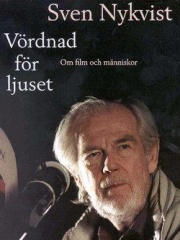
5. Sven Nykvist (1922 - 2006)
With an HPI of 65.68, Sven Nykvist is the 5th most famous Swedish Film Director. His biography has been translated into 36 different languages.
Sven Vilhem Nykvist (Swedish pronunciation: [svɛn ˈvɪ̌lːhɛlm ˈnŷːkvɪst]; 3 December 1922 – 20 September 2006) was a Swedish cinematographer and filmmaker, best known for his collaboration with directors Ingmar Bergman and Woody Allen. Often considered to be one of the greatest cinematographers of all time, his work is generally noted for its naturalism and simplicity. He also won the Academy Award for Best Cinematography for Cries and Whispers (1972) and Fanny and Alexander (1982).

6. Bo Widerberg (1930 - 1997)
With an HPI of 62.76, Bo Widerberg is the 6th most famous Swedish Film Director. His biography has been translated into 25 different languages.
Bo Gunnar Widerberg (Swedish: [ˈbuː ˈvîːdɛrbærj]; 8 June 1930 – 1 May 1997) was a Swedish film director, screenwriter, film editor and actor.

7. Alf Sjöberg (1903 - 1980)
With an HPI of 62.54, Alf Sjöberg is the 7th most famous Swedish Film Director. His biography has been translated into 26 different languages.
Sven Erik Alf Sjöberg (21 June 1903 – 17 April 1980) was a Swedish theatre and film director. He won the Grand Prix du Festival at the Cannes Film Festival twice: in 1946 for Torment (Swedish: Hets) (part of an eleven-way tie), and in 1951 for his film Miss Julie (Swedish: Fröken Julie) (an adaptation of August Strindberg's play which tied with Vittorio De Sica's Miracle in Milan). Despite his success with those films, Sjöberg was foremost a stage director, perhaps the greatest at the Royal Dramatic Theatre (alongside first Olof Molander and later Ingmar Bergman). He was a First Director of Sweden's Royal Dramatic Theatre between 1930 and 1980; he staged there many remarkable and historic productions. Sjöberg was also a pioneer director of drama for early Swedish TV (his 1955 TV production of Hamlet is a national milestone). At the 3rd Guldbagge Awards Sjöberg won the award for Best Director for the film Ön. Sjöberg died in a car accident on his way to rehearsal at the Royal Dramatic Theatre in Stockholm.

8. Jan Troell (b. 1931)
With an HPI of 62.41, Jan Troell is the 8th most famous Swedish Film Director. His biography has been translated into 28 different languages.
Jan Gustaf Troell (born 23 July 1931) is a Swedish filmmaker, screenwriter, author, and cinematographer. His realistic films, with a lyrical photography in which nature is prominent, have placed him in the first rank of modern Swedish film directors along with Ingmar Bergman and Bo Widerberg.

9. Vilgot Sjöman (1924 - 2006)
With an HPI of 59.17, Vilgot Sjöman is the 9th most famous Swedish Film Director. His biography has been translated into 23 different languages.
David Harald Vilgot Sjöman (2 December 1924 – 9 April 2006) was a Swedish writer and film director. His films deal with controversial issues of social class, morality, and sexual taboos, combining the emotionally tortured characters of Ingmar Bergman with the avant garde style of the French New Wave. He is best known as the director of the films 491 (1964), I Am Curious (Yellow) (in Swedish, "Jag är nyfiken – gul") (1967), and I Am Curious (Blue) ("Jag är nyfiken – blå") (1968), which stretched the boundaries of acceptability of what could then be shown on film, deliberately treating their subjects in a provocative and explicit manner.

10. Olle Hellbom (1925 - 1982)
With an HPI of 58.75, Olle Hellbom is the 10th most famous Swedish Film Director. His biography has been translated into 15 different languages.
Nils Olof "Olle" Hellbom (8 October 1925 – 5 June 1982) was a Swedish film director, producer, and screenwriter. He is most famous for directing films based on novels by Astrid Lindgren. His 1960 film Alla vi barn i Bullerbyn was entered into the 2nd Moscow International Film Festival. In 1978 at the 14th Guldbagge Awards he won the award for Best Director for his film The Brothers Lionheart. He died of stomach cancer.
People
Pantheon has 27 people classified as Swedish film directors born between 1879 and 1981. Of these 27, 15 (55.56%) of them are still alive today. The most famous living Swedish film directors include Lasse Hallström, Roy Andersson, and Jan Troell. The most famous deceased Swedish film directors include Ingmar Bergman, Victor Sjöström, and Sven Nykvist. As of April 2024, 2 new Swedish film directors have been added to Pantheon including Tarik Saleh, and Lisa Langseth.
Living Swedish Film Directors
Go to all RankingsLasse Hallström
1946 - Present
HPI: 68.66
Roy Andersson
1943 - Present
HPI: 67.14
Jan Troell
1931 - Present
HPI: 62.41
Johan Renck
1966 - Present
HPI: 57.96
Ruben Östlund
1974 - Present
HPI: 57.83
Erika Lust
1977 - Present
HPI: 57.18
Mikael Håfström
1960 - Present
HPI: 56.61
Tomas Alfredson
1965 - Present
HPI: 54.96
Jonas Åkerlund
1965 - Present
HPI: 54.40
Daniel Espinosa
1977 - Present
HPI: 51.60
Tarik Saleh
1972 - Present
HPI: 50.17
Hannes Holm
1962 - Present
HPI: 48.22
Deceased Swedish Film Directors
Go to all RankingsIngmar Bergman
1918 - 2007
HPI: 82.46
Victor Sjöström
1879 - 1960
HPI: 67.87
Sven Nykvist
1922 - 2006
HPI: 65.68
Bo Widerberg
1930 - 1997
HPI: 62.76
Alf Sjöberg
1903 - 1980
HPI: 62.54
Vilgot Sjöman
1924 - 2006
HPI: 59.17
Olle Hellbom
1925 - 1982
HPI: 58.75
Hasse Ekman
1915 - 2004
HPI: 56.99
Gunnar Fischer
1910 - 2011
HPI: 56.68
Arne Sucksdorff
1917 - 2001
HPI: 55.38
Kjell Grede
1936 - 2017
HPI: 53.79
Malik Bendjelloul
1977 - 2014
HPI: 49.30
Newly Added Swedish Film Directors (2025)
Go to all RankingsOverlapping Lives
Which Film Directors were alive at the same time? This visualization shows the lifespans of the 12 most globally memorable Film Directors since 1700.

